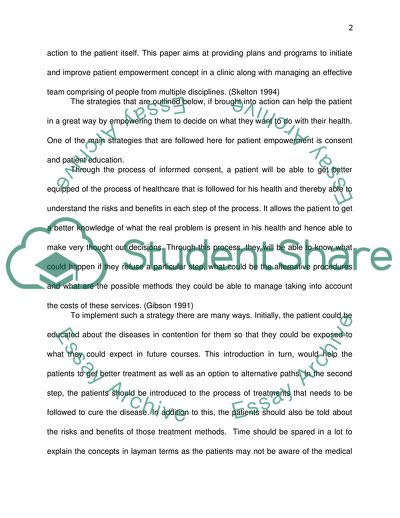Cite this document
(Patient Empowerment and Multi-Disciplinary Teams Coursework, n.d.)
Patient Empowerment and Multi-Disciplinary Teams Coursework. https://studentshare.org/health-sciences-medicine/1747840-patient-empowerment-and-building-up-an-effective-team-with-multidisciplinary-healthcare-professionals
Patient Empowerment and Multi-Disciplinary Teams Coursework. https://studentshare.org/health-sciences-medicine/1747840-patient-empowerment-and-building-up-an-effective-team-with-multidisciplinary-healthcare-professionals
(Patient Empowerment and Multi-Disciplinary Teams Coursework)
Patient Empowerment and Multi-Disciplinary Teams Coursework. https://studentshare.org/health-sciences-medicine/1747840-patient-empowerment-and-building-up-an-effective-team-with-multidisciplinary-healthcare-professionals.
Patient Empowerment and Multi-Disciplinary Teams Coursework. https://studentshare.org/health-sciences-medicine/1747840-patient-empowerment-and-building-up-an-effective-team-with-multidisciplinary-healthcare-professionals.
“Patient Empowerment and Multi-Disciplinary Teams Coursework”. https://studentshare.org/health-sciences-medicine/1747840-patient-empowerment-and-building-up-an-effective-team-with-multidisciplinary-healthcare-professionals.


